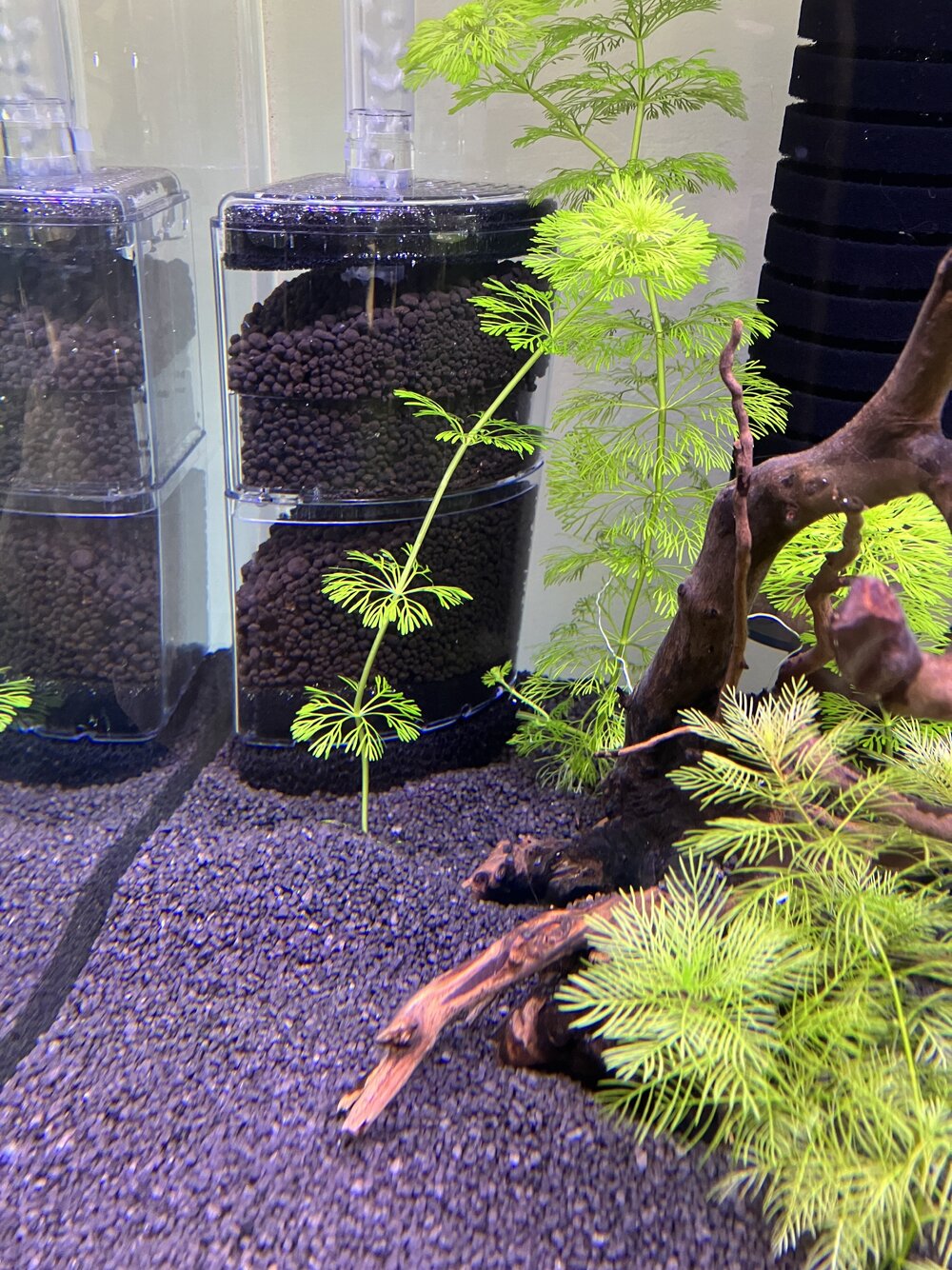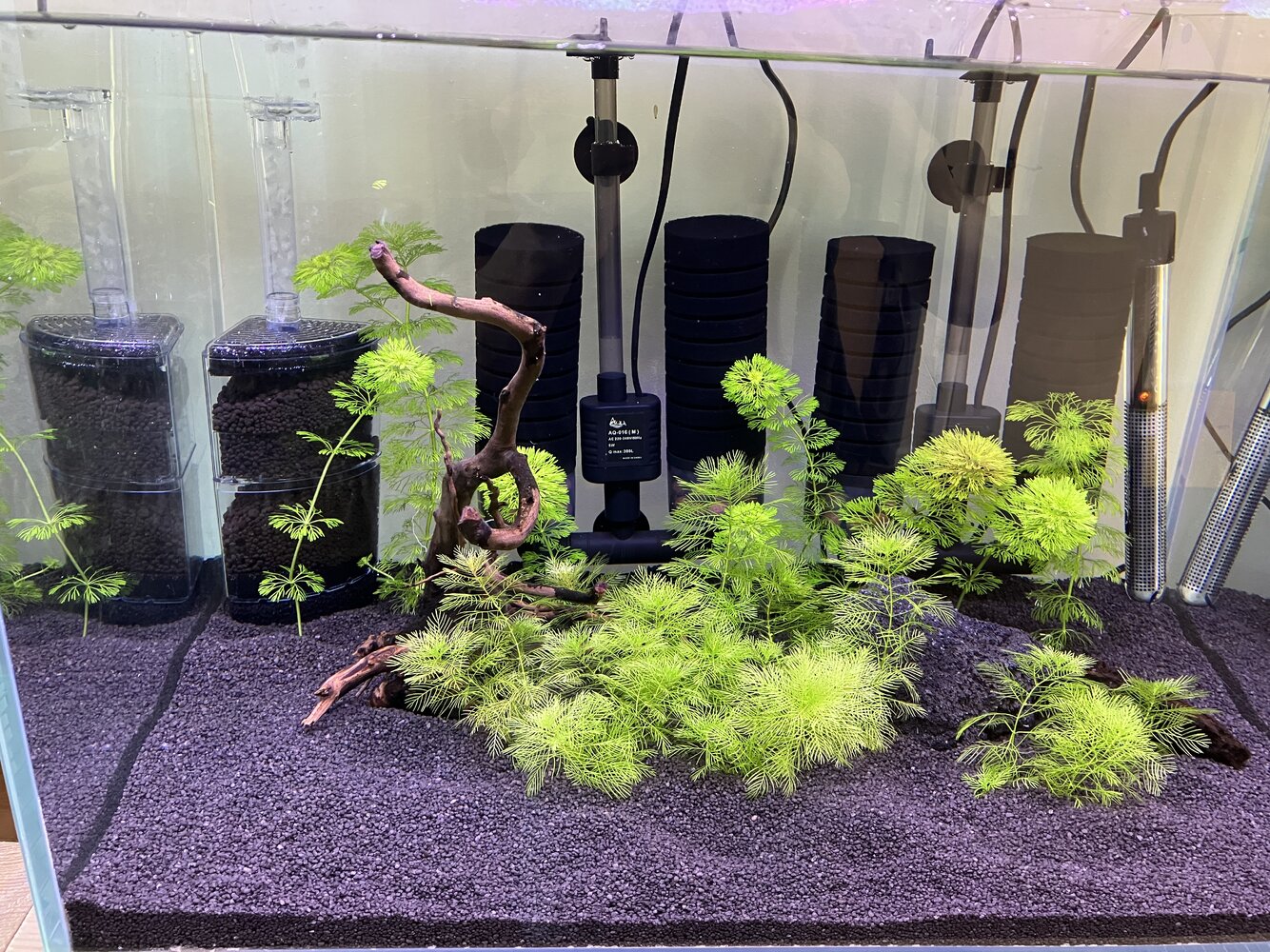hamfist
Member
I'm setting up a CRS tank, and I knew I needed a buffering substrate but really didn't fancy having to change all the substrate in a year or two.
I like inert small gravel, and the plants I use seem to like it too. I use fertiliser tablets plus Flourish for micronutrients so they do get what they need in my neo tanks.
The plants I tend to use are Myriophyllum mattogrossense, Limnophila Sessiliflora, Bacopa 'Compact', and Anubias nana.
Thus my cunning strategy is to put Active substrate in an air pump-driven corner filter with most of the media and sponge removed to leave plenty of room for a reasonable amount of the active substrate. I'll keep a close eye on water parameters and pull the filter out and replace the substrate when its showing signs of losing its buffering capacity.
Water is the standard RO remineralised with the usual Shrimp King Bee Salt GH+ to a GH of 6, KH of 0 and ph6.2.
I am hoping that I am being a clever so and so, and not an idiot. Time will tell but it seems like a good plan. I'm a few weeks off actually getting the CRS.
Have any of you guys done anything similar ?
I like inert small gravel, and the plants I use seem to like it too. I use fertiliser tablets plus Flourish for micronutrients so they do get what they need in my neo tanks.
The plants I tend to use are Myriophyllum mattogrossense, Limnophila Sessiliflora, Bacopa 'Compact', and Anubias nana.
Thus my cunning strategy is to put Active substrate in an air pump-driven corner filter with most of the media and sponge removed to leave plenty of room for a reasonable amount of the active substrate. I'll keep a close eye on water parameters and pull the filter out and replace the substrate when its showing signs of losing its buffering capacity.
Water is the standard RO remineralised with the usual Shrimp King Bee Salt GH+ to a GH of 6, KH of 0 and ph6.2.
I am hoping that I am being a clever so and so, and not an idiot. Time will tell but it seems like a good plan. I'm a few weeks off actually getting the CRS.
Have any of you guys done anything similar ?





